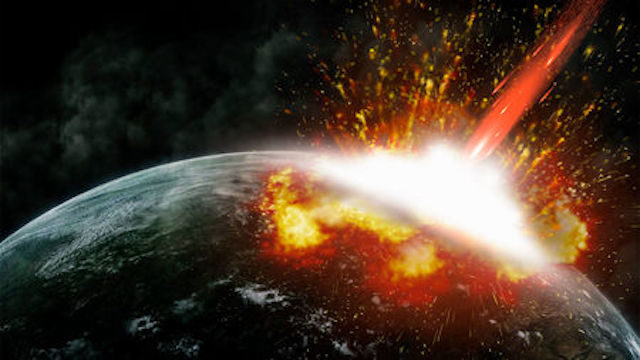Sixty-five million years ago, just such an event killed off 75% of species on Earth. But to really wipe life off the planet, it would take an astrophysical event so powerful that Earth's oceans would literally boil away, according to a new study. The heat and cosmic radiation would make Earth inhospitable even to tardigrades, among the hardiest organisms ever discovered.
"They've taken a grand question—how resilient is life?—and turned [it] into a well-posed calculation, by focusing on the energy required to boil Earth's oceans," says Joshua Winn, an exoplanets expert at Princeton University, who was not involved in the study. "It's an awful lot of energy."
Researchers first calculated the amount of energy it would take to bring all Earth's water above 100°C: 6 x 1026 joules, about a million times more than total annual energy consumption by humans, or a quadrillion (10^15) times the energy needed for the space shuttle to lift off. Translated into cataclysms, it would take the energy given off by the impact of an asteroid the size of Vesta or Pallas, among the solar system's biggest, they report today in Scientific Reports. Other options: exploding stars known as supernovae or gamma ray bursts, highly energetic explosions in outer space.
But none of these is very likely. Asteroids of the right size exist, but "they're not heading in our direction," says study author and astrophysicist Avi Loeb of Harvard University. And although the heat given off by a supernova could make all the water on Earth evaporate, such an explosion would have to be "just next door," cosmically speaking. That's 0.13 light-years away, or about 30 times nearer to our solar system than the closest supernova candidate. Finally, there's almost zero chance that gamma ray bursts would happen at a distance capable of stripping Earth of its seas. "It really is pretty hard to sterilize a planet," says Gregory Laughlin, an astronomer at Yale University who was not involved in the study.
Comment: Given all of the asteroids that were discovered just as they were about to fly by Earth, stating that 'they aren't heading in our direction', is overconfident.
The researchers turned to tardigrades—microscopic, water-dwelling creatures that can endure temperatures as cold as -272°C and as hot as 150°C—as the Earth animals most likely to survive when all others are dead. Tardigrades, also known as water bears, can live for days in the vacuum of outer space. They can also withstand pressure up to six times that at the bottom of the ocean and levels of radiation thousands of times the lethal human dose, thanks to a yet-unknown mechanism that allows them to repair their DNA. But they wouldn't be able to survive prolonged exposure to severe heat and cosmic radiation without water—or endless time in space.
The findings have implications for more than just earthlings. They could inform our search for creatures on alien worlds, says study author David Sloan, a cosmologist at the University of Oxford in the United Kingdom. "This really broadens the range of places where we should be looking for life." That's because the sturdiest organisms on Earth—not only tardigrades, but also microorganisms that thrive in extreme conditions—may resist a wide range of catastrophes, including humanmade ones such as global warming or nuclear wars. "I have an optimistic view about life," Loeb says. "It may be able to survive all the mistakes we'll make in politics in the future."
Correction, 17 July, 10:45 a.m.: This story originally misstated the amount of energy it would take to bring all Earth's water above 100°C: It has been updated to the correct calculation.




Reader Comments
Best possible scenario, 100-120 yrs... worst case scenario, you were never even alive to begin with.